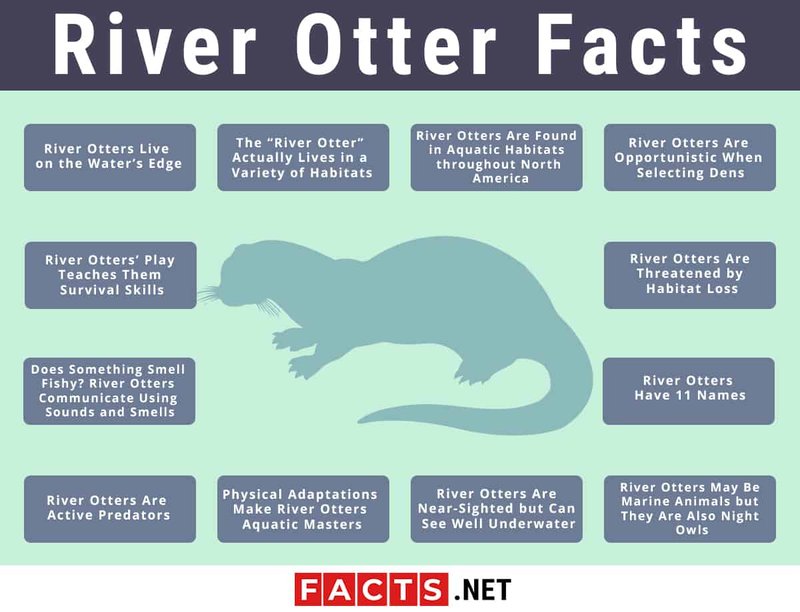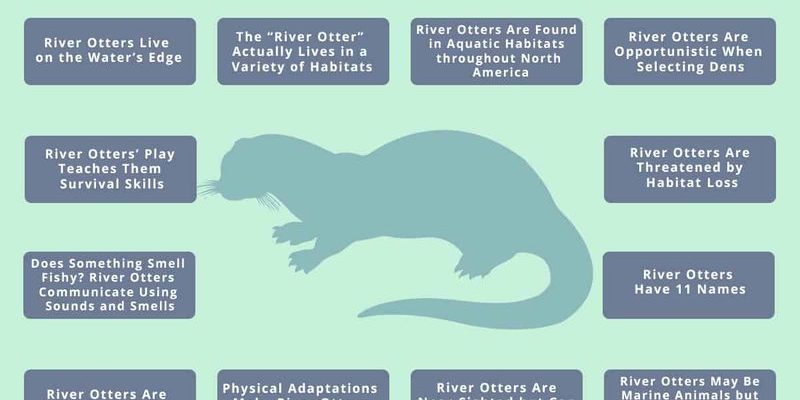
River otters are found across various regions, each with its unique environment. From the fast-flowing rivers of North America to the quiet marshes of Europe, these animals adapt to their habitats in remarkable ways. This article will explore the different places where river otters live, what makes these locations suitable for them, and how they play a vital role in the ecosystem. If you’ve ever been curious about where these charming animals reside, you’re in the right place!
The Natural Habitat of River Otters
River otters primarily dwell in aquatic habitats. They rely on clean water sources like rivers, lakes, and wetlands for food and shelter. These areas are rich in biodiversity, providing a steady diet of fish, crustaceans, and small mammals. In some regions, you might even find them in coastal areas, but they typically prefer freshwater environments.
These animals are semi-aquatic, which means they spend time both in water and on land. This dual lifestyle affects how and where they build their homes. River otters create dens, often using abandoned burrows made by other animals or making their own dens near riverbanks. The entrances to these dens are typically hidden under foliage or rocks, helping them stay safe from predators.
In essence, river otters look for a perfect blend of water and land environments. They need places where they can swim, hunt, and rest without too many disturbances. This balance helps them thrive and play their part in the ecosystem.
Distribution of River Otters
River otters are quite adaptable, and you can find them in a variety of regions across North America and beyond. In the United States, they inhabit all states except for Hawaii. From the snowy landscapes in Alaska to the warm waters of Florida, river otters have a broad distribution.
Outside the U.S., you’ll find river otters in Canada, Mexico, and parts of South America, too. They prefer areas with ample water sources and rich vegetation. These habitats help support their diets, which mainly consist of fish and other aquatic prey.
You might be wondering how far they roam. Generally, river otters occupy home ranges that can span from 1 to 25 square miles, depending on food availability and habitat quality. They’re social creatures, often living in family groups, which can influence their distribution in a given area.
Different Types of River Habitat
One of the coolest things about river otters is how they thrive in various aquatic environments. Here’s a look at a few common types of habitats they prefer:
- Rivers and Streams: These are ideal for river otters as they offer swift currents and abundant food sources. The flow of water helps oxygenate the habitat, supporting fish populations that otters rely on.
- Lakes and Ponds: Calm bodies of water like lakes can be great homes for otters, especially if they have submerged vegetation. This kind of environment provides ample opportunities for hunting.
- Wetlands: Marshes, swamps, and other wetlands are also popular spots for river otters. These areas offer a unique mix of land and water, which is perfect for their diverse diet.
Each of these habitats presents different challenges and opportunities. For instance, otters in fast-moving rivers might need to be agile swimmers, while those in ponds may develop different hunting strategies.
The Importance of Clean Water
Clean water is essential for river otters. Pollution can significantly impact their habitat and food source. Water quality directly affects fish populations, which are crucial to their diet. When aquatic pollution increases, fish die-offs or declines can occur, leading to food scarcity for otters.
Moreover, if their habitat becomes heavily polluted, it can reduce suitable dens or nesting areas. This environmental health is vital, not just for river otters but for entire ecosystems. Keeping water sources clean ensures that these playful creatures continue to thrive, and it helps maintain biodiversity.
Protecting river ecosystems from pollution and habitat destruction is important. As river otter populations often indicate the overall health of their environment, nurturing these habitats can lead to healthier wildlife communities.
Human Impact on River Otter Habitats
While river otters are generally resilient, human activities have caused noticeable impacts on their habitats. Urban development, agriculture, and pollution can lead to habitat loss, making it challenging for otters to find suitable living spaces.
For example, when rivers are dammed or diverted, it alters the flow of water, impacting fish populations and the overall ecosystem. Similarly, increased agricultural runoff can harm water quality, making it less suitable for otters and their prey.
Conservation efforts are critical in preserving river otter habitats. By supporting local initiatives that promote clean waterways and protect natural spaces, we can help ensure these adorable creatures have safe places to live and thrive.
How to Spot River Otters in the Wild
If you’re keen on spotting river otters, there are a few signs to look for. These playful animals often leave behind clues of their presence, such as:
- Tracks: Look for distinct paw prints near water edges. Their webbed feet and slender body leave unique impressions in the mud or sand.
- Dens: Keep an eye out for burrow entrances along riverbanks. This is where they rest and raise their young.
- Playful Behavior: Watch for otters swimming, sliding down mud or snowbanks, or playing with each other. They’re known for their charming antics, like tossing stones or chasing one another.
If you visit areas known for their otter populations, patience is key. Arrive early or late in the day, when these animals are most active. Bring binoculars and settle in for a delightful viewing experience.
River otters are enchanting creatures that bring life and joy to our waterways. Their unique habitats and distribution tell a story about the delicate balance between wildlife and nature. By understanding where river otters live and the challenges they face, we can contribute to their conservation.
Taking steps to protect their environments—like supporting clean water initiatives and spreading awareness about their needs—ensures that future generations can enjoy the beauty of these playful animals. So the next time you find yourself near a river, keep your eyes peeled. You might just catch a glimpse of these adorable swimmers, reminding us all about the wonders of nature.

